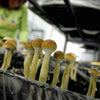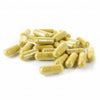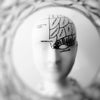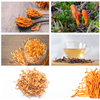Panaeolus cyanescens: The Blue Meanies Psychedelic Mushroom That Might Grow in Your Backyard
Psychedelics have been used for centuries by many cultures worldwide for religious and shamanic purposes. In recent years, there has been a renewed interest in these substances as potential treatments for mental health conditions such as anxiety, depression, and addiction or just a total reset in consciousness. Psilocybin mushrooms are one of the most well-known psychedelics, with many varieties that can be found growing in nature.
Out of the many strains of psilocybin mushrooms, one tends to be the cream of the crop, and this is the Panaeolus cyanescens, also known as The Blue Meanies or Blue Ringers.
Panaeolus cyanescens is a member of the family Bolbitiaceae, which contains about 200 species of mushrooms worldwide. his small mushroom grows on wood chips and manure, and is often found in tropical climates such as Hawaii. The cap is dark brown to black with a light margin when young, but fades to tan or pale brown with age.
The gills are adnate (attached) to near-free from the stipe (stalk), and are greyish black when young but fade to dark brown with maturity. The spores measure 8–11 by 5–6 micrometres(µm), have an ellipsoid shape ,and are chocolate brown in colour . Panaeolus cyanescens can be distinguished from other members of its genus by its smaller spores .The mushroom has a dark brown to black cap with slightly lighter margins. The gills are purple-black when young and turn greenish-black as they mature. The stem is thin and fragile, ranging from 3 to 8 cm in length (about 1-3 inches).
Panaeolus cyanescens contains the psychoactive compounds psilocybin, baeocystin, and possibly norpsilocin. The way these compounds interact synergistically with each other is the reason why this particular species has the reputation it does. Psilocybin is the chemical that is most responsible for the psychedelic experience. Baeocystin, which gets its name from its creator, Semyonov, is about as active as psilocybin but with some subtle differences in its effects. The third chemical, norpsilocin, is a thought-to-be synthetic version of psilocybin and also produces remarkably similar effects to psilocybin. These compounds are all derivatives of psilocybin and are controlled schedule 1 substances under the law.
Some of the other 28 active psychedelic compounds found in Panaeolus cyanescens are: isoamalycine, aclazocine, 5-O-b-DMT, and dihydroisoxazolinylindole (2I)-5H-dibenzo [f,g] quinolizine). All of the active compounds are present in very low quantities compared to psilocybin.
The effects of psilocybin are thought to arise from multiple mechanisms acting together all at once. In other words, many different chemicals, acting as messengers between different parts of the brain and creating some sort of cascading effect.
So if you're ever feeling adventurous and are looking to trip out on some killer 'shrooms, be sure to seek out Panaeolus Cyanescens— just don't go eating any ol' mushroom you find in the wild , as many poisonous varieties also exist .We hope that you the reader have learned something about this unique species of mushroom and how it is used on a global scale.







Leave a comment
Please note, comments must be approved before they are published